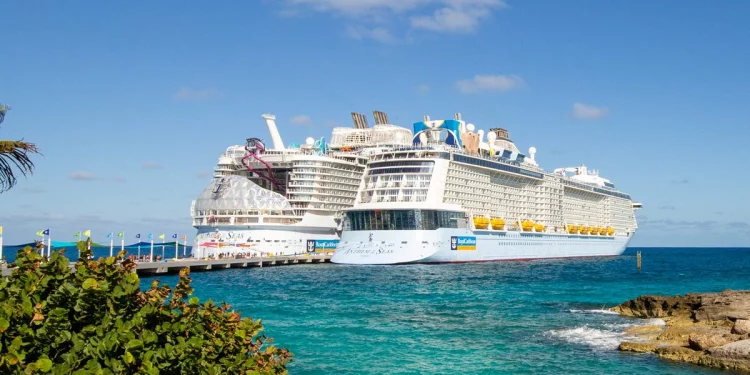Why it's illegal to 'skiplag' on cruises between two US ports
Because of a more than 100-year-old law, "skiplagging" on cruise ships between two US ports could result in a $778 fine.

- "Skiplagging" on flights is frowned upon by airlines but could save travelers' money.
- However, skiplagging on cruise could result in an almost $800 fine.
- A decades-old law prohibits non-US-flagged vessels from transporting travelers directly between two US ports.
Advertisement
Advertisement
While skiplagging on flights is frowned upon by airlines, doing so on cruises could be breaking a law that has been in place for more than 100 years.
Skiplagging — also known as hidden-city ticketing — is the "hack" of booking a flight with a layover in the desired destination and then skipping the second flight. While the loophole has become controversial, it has the potential to save travelers hundreds of dollars on flight costs.
If you're a frequent cruise goer, you could be wondering if the same is possible for cruise travel in the US. After all, in 2022, some of the cheapest cruises sailed for as little as $29 a day. And through 2023, there are still several cruises sailing roundtrip from US ports for under $400 in total, according to data from cheap cruise aggregator Cruise Sheet.
These prices are undeniably cheap. Depending on the destination, they could be cheaper than taking a flight from the embarkation location to one of the stops on the itinerary. However, depending on the ports, "'skiplagging' would be very difficult on a cruise," a spokesperson for the Cruise Lines International Association (CLIA) — the largest cruise industry trade group — told Insider in an email.
Advertisement
Advertisement
According to the US Passenger Vessel Services Act of 1886, travelers on ships that don't fly the US flag — the majority of popular cruise vessels — cannot embark at one US port and disembark to conclude the trip right after at another US port.
If a traveler decides to test this, the cruise line could face a $778 fine. And the company could levy this fine on the passenger who violated the act, CLIA told Insider.
Think of it as an American port "sandwich." A cruise ship can't begin and end an itinerary between two domestic ports without a foreign port in between, Ross Klein — the founder of CruiseJunkie.com and a professor and associate dean for graduate programs and research at Memorial University of Newfoundland — explained.
He uses a Los Angeles, Hawaii, and Mexico itinerary as an example. If a cruise vacation is roundtrip to Los Angeles with stops in Hawaii and then Ensenada, Mexico, it would be illegal if a guest disembarked in Hawaii before the Mexico stop. "That would be using the cruise ship in a way it's not intended to be because what you're buying is a round-trip ticket back to Los Angeles via Ensenada," he said.
Advertisement
Advertisement
It's one of the reasons why there are so many cruises sailing from Florida to the Bahamas: "It's such an easy stop."
On rare occasions, a guest could miss the embarkation time when a cruise vessel is mid-itinerary and docked at a port for the day. Most of the time, these travelers can reunite with the ship before the final disembarkation date, CLIA said. But if the passenger decides to just conclude the trip early at a US port they're not supposed to, any fines the cruise line faces could again be passed onto them. So it's up to the guest to decide if a potential $778 fine is worth saving money on the flight.

 oujisama
oujisama 











